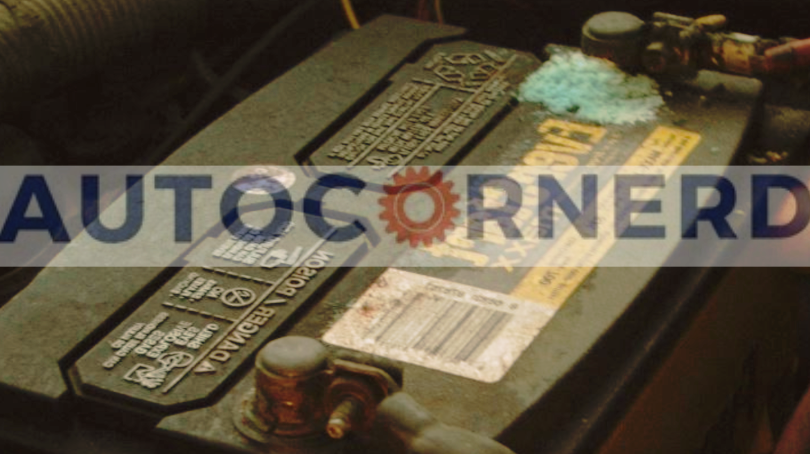My Car Starts Sometimes and Sometimes It Doesn’t?
The most common cause of car starting sometimes is the weak battery or the bad ground connection causing intermittent car starting failures. If the battery and ground connections are fine, you should check if the starter connection is clean and properly tightened. Moreover, the starter motor should function properly.
Few things are more annoying than turning the key and having your engine stumble instead of start. Before intermittent car starting issues leave you on the side road shoulder, careful diagnostics can often determine the root cause.
A weak battery, corrosion on the terminals, or ground wire damage can trigger simple starting failures. Other times, the culprit is more complex. Whatever the case, some detective work is needed.
As a first step, check these three common troublemakers:
- Battery Power: Make sure the battery terminals are clean and tight. Use a multimeter to check the charge level. If the battery seems weak, swap in a fresh one.
- Fuel Filter: A clogged filter blocks fuel flow to the engine. If yours looks dirty, replace it.
- Spark Plug: An old spark plug may fail to fire properly, throwing off the timing. Inspect the plug with a ratchet. If it’s worn down, put in a new one.
If you have some preliminary knowledge, you can jump straight to the causes section.
For you all, I’ve engineered an interactive tool that helps in detecting car faults. It directs you via clear-cut steps. Don’t forget to assess it.
- Intermittent car starting can be caused by electrical or fuel system issues. Main causes are weak battery, corroded battery terminals, bad ground connections, faulty starter motor or starter solenoid.
- For no crank condition, first check battery voltage, connections and ground straps. Tap starter to free up solenoid if stuck.
- For crank but no start, check fuel pump operation and relay. Inspect fuel injectors and filters. Spark plugs and ignition coils should also be checked.
- Important engine sensors like crankshaft position sensor, camshaft position sensor, MAF sensor etc can cause intermittent no start if faulty.
- Always check for any stored OBD trouble codes first to identify potential issues before physical inspection and testing components.
- Starter motor wires, fuel pump wiring and ignition system wiring should be checked for damage or loose connections.
- Problems like bad alternator diode or regulator can slowly drain battery over time leading to no start.
- Corrosion on battery terminals and ground straps is common. Clean thoroughly and use dielectric grease for prevention.
First Hand Approach If Car Starts Intermittently
If your car starts inconsistently, your first-hand approach should be to check if there is any OBD2 code stored in your engine’s memory before diving further.
If your vehicle model is after 1996, there is the engine control module that throws Onboard Diagnostic (OBD2) trouble codes so that you can identify the faulty component in your engine.
OBD2 trouble codes are usually expressed as ‘PXXX’. ‘P’ represents the powertrain of your engine. If the first digit after P is ‘0’, it means that a trouble code is applied to all vehicles (irrespective of the manufacturer).
If it starts with ‘1’, it means the OBD2 code is only specific to your vehicle. For instance, P1450 code is only shown in Ford vehicles. On the other hand, the P0171 code holds the same meaning for every vehicle.
Now, you should have an OBD2 scan tool to check if there is an OBD2 code stored in your engine’s memory that is causing your car to start intermittently. My favorite OBD2 scan tool is Bluedriver.
It is connected to the smartphone (both android and iPhone) via Bluetooth. Plug the tool into the OBD2 port of your vehicle and connect it with your phone. It will display all trouble codes (if any) stored in your vehicle.
Also, do note that there are two kinds of car intermittently starting conditions. One where the starter motor operates and you can hear things moving but the engine does not start.
This is “crank, no start”. The other is where you may hear one or more clicks or nothing at all when you turn on the key. This is called “no crank, clicking”.
This is what it sounds like:
Why My Car Starts Sometimes And Sometimes It Doesn’t?
If the car starts intermittently, there can be electrical problems in your car. If you hear rapid clicking noises in your car when you turn on the ignition key, there might be issues in either starter or bad ground or starter connections that are causing intermittent failure of starting the car.
If your car is starting inconsistently but you’re hearing a cranking sound, you should check spark plugs, fuel injectors, and fuel pumps. Internal engine problems can also cause your car sometimes fail to start.
What are the Causes Of Car Starting Intermittently?
Here are the causes of a car starting problems at times:
- Weak or dead battery
- Corroded or loose battery terminals
- Bad Ground Connection
- Bad Electric Connection From Battery To Starter
- Bad starter
- Bad Ignition Key
- Malfunctioning fuel pump
- Clogged or Faulty Fuel Injectors
- Clogged fuel filter
- Bad Spark Plugs
- Bad ignition coils
- Bad engine sensors (O2, MAF, Crankshaft, MAP, Throttle Position)
1. Battery Issues Like Low Voltage or Dead cells Can Cause Intermittent Car Starting
A weak or dead battery is the most common cause of a car not starting occasionally. Most car batteries only last 3 to 4 years. It is recommended to check the condition of your battery every six months.
A battery can fail because of a bad alternator. Moreover, sometimes, aftermarket batteries have poor quality. They can fail readily.
How to test?
Take a voltmeter and connect its probes to the battery posts. Have someone turn on the ignition key and try to crank the car. If the voltage of the battery is less than 9.6V when cranking, the battery is weak and needs to be replaced.

If the voltage of the battery is greater than 9.6V, you can try a jump starter. Most cars can be jump-started if the battery has died.
Simply take the jumper cables and connect the red terminals to the red terminals of the battery and the black to black terminal of the battery. If the car still doesn’t start, and the battery records voltage near 12V after a jump start, the issue is something else.
2. Corroded Battery Terminals Preventing Reliable Power Transfer to Starter

Corroded battery terminals can also cause your car not to start. When a battery terminal corrodes, it starts to leak current which then results in a low voltage condition.
As a result of this corrosion, the battery may not be able to deliver the charge it once had. This causes the car to turn over and not start.
Why does it happen?
There are several causes of corrosion in the battery. They can include air and moisture trapped in the cells, poor installation of battery terminals, and manufacturing defects.
As corrosion occurs, atoms or molecules are drawn from the surface of the metal of battery posts and terminals and dissolve in the corroded sludge.
What to do?
While checking corrosion of battery terminals, make sure to also check their inner surface which is in direct contact with the battery posts. Sometimes, we often forget to check that area.
In addition, see if battery terminals are bent due to overtightening or if there is any gap between the battery terminal and the battery post. There are certain torque requirements for a battery terminal. You can find them in their specifications.
You can check my guide on car won’t start after battery replacement. In that guide, I have explained how to clean the terminals of a car battery with a mixture of water and baking soda. So, I’ll highly recommend you first read that guide.
Note: While removing battery terminals, make sure to always remove the negative terminal first. And when you reconnect battery terminals, make sure to connect the positive terminal first. Also, always apply grease to the battery terminals to prevent corrosion.
3. Bad Ground Connection Reducing Current Flow For Engine Ignition System Initialization
Sometimes, intermittent bad ground connections can also cause intermittent car starting issues. The negative terminal of your car battery is grounded to the engine chassis, engine block, and other mechanical components.
The ground connections depend on the car model. You will find major ground connections on the transmission casing and engine block. You need to make sure that those ground connections are not corroded or loose.
Also, check the insulation of those ground wires. If it is broken, it could cause a short circuit. Also, there are chances that the wire inside the insulation is broken which are causing intermittent car starting failures.
How to check?
The method to check ground connections is to measure the voltage between the negative terminal of the battery and the ground connection using a voltmeter. If everything is fine, the voltage should be less than 0.2V.
If the voltage is greater than 0.2V, you should find all possible ground connections in your car. Check if the insulation of the cables is broken at some point. Moreover, the contact points of ground cables should be clean and smooth.
You can apply a thin film of petroleum jelly to the ground contact points to prevent corrosion.
Moreover, in some engines, there is a ground strap connected to the transmission casing which you can find in the video below:
Many users ignore this ground strap as it is hard to locate in the engine. One user was facing intermittent car starting issues and he found that the ground strap was caked in crud. So, make sure that the connections of ground strap are clean.
4. Bad Connection From Battery To Starter Resulting In High Resistance

Starter in the engine gets power from the positive terminal of the battery. Usually, there are two wires on the starter solenoid.
One wire directly powers the starter solenoid and the other wire powers the starter motor. Visually inspect the wire on starter solenoid terminals for any insulation breakage or corrosion.
You can watch the below animation for an understanding of starter wiring:
In the above video, the ‘S’ terminal of the starter solenoid is the terminal on which the wire comes from the ignition switch and the ‘B’ terminal on starter is the terminal on which the wire comes straight from the positive terminal of the battery.
The voltage between the positive terminal of the battery and the terminal on the S terminal on the starter solenoid should be less than 0.2V.
On the starter casing, you can find another wire that is a ground wire. Visually inspect it and see if the insulation of the cable has broken near the connection.
Note: Not all vehicles have this wire on the starter. Sometimes, the casing of the starter is bolted to the engine block and thus, grounded in that way.

Read my guide on understanding starter wiring connections to learn more.
5. Bad Starter Unable To Engage Flywheel Ring Gear For Combustion

After checking ground connections, and starter cables, you should inspect a starter as it can also cause the car startup hit and miss.
A starter consists of a solenoid and a motor. A solenoid is enclosed in a small cylindrical casing on the motor casing.
Note: Before pulling out the starter, first tap the starter solenoid with a hammer while you turn on the ignition key. Sometimes, the starter solenoid is stuck, which is preventing the car from starting.
To test the starter, you have to pull the starter out from your car. In some cars, the starter is located under the engine while in other vehicles, you will find the starter near the engine block when you open the hood.
If the solenoid of the starter is working, the gear will come out of the motor casing to engage with the flywheel.
If the starter motor is working, the gear will rotate as well. Sometimes, faults are in the armature of the starter motor that causes intermittent starting of the car.
After you install the starter, make sure that its terminals are clean. There should be no signs of corrosion on the terminals of the cable that you will connect with the terminals of the starter. Moreover, the cables should be properly tightened.
6. Faulty Transceiver Circuits In Key Fob Hindering Proper Authentication Of Encoded Starting Signal
Cars like BMW or Mercedes come with a key fob with a battery inside it that communicates the chip of the key fob with the car’s computer.
At times, the identity chip inside the key fob fails to communicate with the car’s computer and causes the car not to start.
However, if you put the key in and wait for a few seconds before cranking it, the car will start. Many users were able to do this. So, chances are that the problem is in your key.
7. Malfunctioning Fuel Pump Restricting Fuel Delivery
Your car’s fuel pump is responsible for pressurizing the fuel in the fuel line. The fuel pump can fail due to excessive heat caused by an electrical short circuit or a mechanical fault.
When you turn on the ignition key, the fuel pump runs for a few seconds to pressurize the fuel line. Have someone crank the engine and you open the hood and listen the whirring noise of the fuel pump.
If you don’t hear any noise from the fuel pump, it means the fuel pump is bad. To test this, spray some starter fluid in the air intake manifold and try starting the engine.
If it starts readily, it means the fuel pump is not working or fuel injectors are clogged, due to which they are intermittently injecting the fuel.
How to test?
Before pulling out the electrical fuel pump closer to the gas tank, first, check the fuel pump relay and the fuse of the fuel pump. The fuel pump relay is usually located in the fuse box. You have to check the fuse box layout of your car model to find the exact location.
Here is how to test the fuel pump relay:
I would suggest you do multiple tests on the fuel pump relay. An intermittent failing fuel pump relay is annoying and does not turn on the fuel pump at all times.
8. Clogged or Faulty Fuel Injectors Inconsistently Injecting Fuel Into Combustion Chambers

A key piece under the hood that plays a big role in getting your car started is the fuel injector. You can think of these as little fuel spraying nozzles, each responsible for misting gas directly into the engine cylinders.
When you go to start your ride and the engine cranks but doesn’t fire up, faulty fuel injectors could be the culprit. These electronically controlled valves have to precisely meter out the right amount of gas to power your engine. If gunked up with carbon and oil buildup, fuel injectors get clogged and can’t do their job.
The result is an engine that hesitates, runs rough or shakes when trying to start in cold weather. In severe cases of blocked injectors, your car might not start at all due to fuel starvation under the hood.
How to test?
Before pulling out injectors, you should first inspect the electric connectors of each fuel injector. If they are not properly supplying current, it can also cause intermittent starting of the car.
If the resistance across terminals of the injector reads infinite resistance, it means the coil in the injector is opened.
If the multimeter shows OL or very small resistance, it means that the coil in your injector has short-circuited. If it shows resistance specified in the specs of your fuel injector, it means that the coil of fuel injector is fine.
Here are the following things you need to check for fuel injectors:
- Voltage across the terminals of the fuel injector connector
- Resistance across the terminals of the fuel injector
- Mehchanical test of fuel injectors by connecting them one by one by one with a 9v or 12v battery
I can’t explain everything in detail here. Otherwise, the guide will be too long for you to digest. You can read my guide on car won’t start after replacing fuel injectors. I have explained everything in detail there. You must check it.
9. Clogged Fuel Filter Obstructing Clean Fuel Supply
The fuel filter’s job is to remove gunk and debris as fuel flows from the tank to the engine. Over time, fuel filters get choked up with all that nasty stuff. When that happens, fuel has a harder time getting through, kind of like trying to suck a thick milkshake through a coffee stirrer.
The end result? Your engine doesn’t get enough fuel to run properly. One day it starts up just fine, the next day it takes a few cranks. That on-again-off-again starting is a clue the fuel filter needs swapping.
Fuel filters aren’t designed to last forever. After a while, flow slows to a trickle, and the filter must be replaced. If your ride is temperamental about starting, a plugged filter could be the troublemaker.
Most cars have a fuel filter after the fuel pump to screen out tiny particles. There may also be a pre-pump strainer that grabs bigger chunks to keep the fuel pump itself from jamming up. Together, they help keep fuel clean so your engine can run right.
How to test?
Before attempting this test, be sure to drain all gasoline from the fuel filter to avoid any potential hazards.
For the test, you’ll need a straw (to avoid ingesting gasoline) and the fuel filter itself.
- Slide the straw over the inline connection, carefully ensuring a tight connection that won’t obstruct airflow.
- Blow into the straw and observe if the air flows through the filter effortlessly or encounters obstruction.
If air flows through the fuel filter without any hindrance, the fuel filter is in good condition. However, if the airflow is slow or blocked, it indicates a faulty fuel filter that needs to be replaced.
10. Bad Spark Plugs or Bad Ignition Coils
If you put starter fluid/carb cleaner in the air intake body and the car still doesn’t start, it means the problem is in the ignition system of your engine. The chances are that the spark plugs have gone bad or the ignition coil is not supplying the current to the spark plugs.
Before checking the spark plugs, you have to check if the ignition coil is being supplied with the current or not.
The ignition coil is responsible for converting 12 volts of direct current (DC) from the battery to the higher voltage required to make the spark. This high voltage is needed so that the spark plugs can provide enough energy to ignite the fuel mixture in the cylinders.
Now, keep in mind that, in older cars, there is only one ignition coil that supplies current to all spark plus through a distributor. In modern engines, there is no distributor. So, each spark plug has ignition coils.
If your car has a distributor, it may become worse due to deposits of powdery substances on the carbon contacts.
GM 4.3L engines have had faced such problems in distributor caps. I have linked to that guide. You can get a better idea of distributors in that guide.
Now, if your car does not have a distributor, you have to check the ignition coil of each cylinder. The intermittent current through the ignition coil is also the cause of intermittent ignition in car.
How to test?
The ignition coil has two windings. The positive terminal primary winding is connected to a 12V battery positive terminal via an ignition control module and ignition switch in modern cars. The secondary winding magnifies the current output and sends a spark to the spark plug.
If the ignition coil is short at some point, it will cause intermittent car starting failures. To diagnose an ignition coil, you have to measure the resistance across positive and negative terminals of both primary and secondary coils of ignition coils in each cylinder (Again I repeat that engines without distributors have ignition coils for each cylinder).
You can find the optimal resistance values of an ignition coil in its specs or service manual.
The resistance across terminals of the secondary coil is in thousands of ohms and resistance across terminals of the primary coil should be less than 1 ohm.
Another thing you should note is that the ignition coil can have two, three, or four terminals, depending on your car.
I found this video helpful to test ignition coils:
You should also check the wiring of the connector supplying the 12V battery signal and trigger signal from PCM to the ignition coil. If the wiring is bad at end of the connector of the ignition coil, it can also cause intermittent car starting issues.
After checking the ignition coil, check if the spark plug is fouled with the fuel and oil buildup. Usually, bad fuel injectors also cause excessive fuel buildup on the spark plugs that damages them. This guide (PDF) is good to identify bad spark plugs.
11. Bad Sensors Causing Intermittent Car Starting
PCM uses readings from the following sensors for fuel injection and ignition process:
- MAP (Manifold Air Pressure Sensor)
- Throttle Position Sensor
- MAF (Mass Airflow Sensor)
- Knock Sensor
- Fuel Pressure Sensor (Found in GDI engines)
- Crankshaft Position Sensor (CKP)
- Camshaft Position Sensor
- O2 Sensor
A car can have either MAF or MAP sensor. It depends on your engine. PCM uses readings for MAP and Throttle Position Sensor to measure the fuel amount to be injected. MAF sensor calculates airflow to measure fuel amount. You can read this guide to test and clean MAF sensor.
The CKP sensor measures the position and speed of the crankshaft. You can read my guide on car won’t start after replacing crankshaft sensor.
O2 sensor calculates unburnt oxygen in emissions and sends this information to PCM to determine desired air/fuel ratio. You can read this guide to test the O2 sensor.
Final Verdict
The occasional may feel annoying. But no need to worry just yet. The main job of a starter is to switch on power so the engine turns over.
If your starter keeps faltering, the likely troublemakers are worn starter solenoids. Essentially, solenoids are little switches that shuttle power to the starter when you turn the key. Solenoids tend to wear out over time. Signs of wear include the starter cable or battery cable getting squeezed between the starter and the housing.
Other common culprits for temperamental starting include a drained battery or glitches with the ignition switch or spark plug wires.
Now, what if your car turn over just fine but then quit shortly after driving off? Chances are the fuel pump and injectors need some care. Make sure the fuel pump isn’t damaged. Check that fuel can flow freely through the lines. When supply gets blocked, so does your ride.
Some First Hand Experiences Shared By Users In Different Communities
Our team conducted research across various online communities, forums, and subreddits to gather user comments and opinions on “car starting intermittently”.
User 1 says:
Had this issue last month. My Civic would start fine some days, then nothing on others. Turned out it was the battery terminals, all corroded. Cleaned them up and it’s been smooth since.
User 2 says:
Had a similar headache with my Altima. It was a failing ignition coil. Replaced it and the car starts reliably now.
User 3 says:
This happened to my Malibu last summer. After some trial and error, found out it was the crankshaft position sensor. Replaced it and the issue was gone.
User 4 says:
My Jetta had this intermittent starting issue. I initially thought it was the battery, but it was actually the fuel filter. Changed it and it’s been fine since.
User 5:
This drove me nuts! My Focus had the same problem. I checked the starter and battery; both were okay. Finally, a mechanic friend suggested looking at the fuel pump. Replaced it, and the issue stopped.
